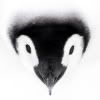T. Rex's Relatives Had More Items on Their Menu
By SINDYA N. BHANOO
Published: December 20, 2010
Although Tyrannosaurus rex liked to dig its teeth into flesh, many of its relatives had beaks, fewer teeth and longer necks and preferred plants, according to a new study.
Scientists at the Field Museum in Chicago report their findings on theropod dinosaurs in the Proceedings of the National Academy of Sciences.
"Our image of theropods as flesh eaters is antiquated and outdated," said Lindsay Zanno, a paleontologist at the museum and the study's lead author. "Even we colloquially called them predatory dinosaurs."
Dr. Zanno and her colleague Peter Makovicky studied records of 90 theropod dinosaurs. Instead of simply analyzing their teeth and jaw structure to guess whether they might have been carnivorous, the researchers looked for more concrete clues.
"We used fossil evidence of food items preserved in the stomach area, and looked for stomach stones, found in plant-eating animals," Dr. Zanno said. "We wanted direct evidence that was independent of the animal skeleton itself."
About half of the 90 theropods appeared to be omnivores or herbivores, and shared certain physical characteristics, like beaks.
The research may help scientists better understand how theropod dinosaurs eventually evolved into birds, and how they were able to take flight and begin living in trees.
"We can ask, 'Did this have anything to do with plant eating?' " Dr. Zanno said.
It may also provide clues as to why theropods thrived compared with other dinosaurs.
"We think that by diversifying their diet and eating many different plants, they were able to survive without competing," she said.
--
Got Penguins?
Penguin News Today
The Science of Penguins
The Gentoos are back! Come see them on live cam at:
Gentoo Penguins of Gars O'Higgins Station, Antarctica

__._,_.___

No comments:
Post a Comment